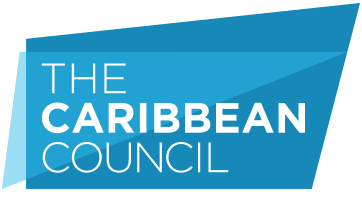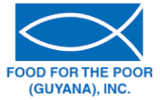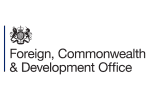Photo by Jeremy Zero
Cuba’s Minister of Economy and Planning, Deputy Prime Minister Alejandro Gil, has said that despite the pandemic and the tightening of the US embargo he believes that the Cuban economy can return in 2023 to the same level of GDP recorded in 2019.
Explaining this to the media during a review of the first quarter’s economic performance, Gil said that “if we grow 6% in 2021 and around 6% in the next year”, if calculated at constant prices, Cuba would by the end of 2022 have the same level of GDP as it closed 2019 at.
The Minister said that although the tourism sector, which he described as “the driving force of the economy”, had not reactivated, other sectors such as telecommunications and nickel were performing better than expected with prices for nickel having risen US$17,000 per ton on the international market.
Gil said that even though the recovery of tourism remains uncertain in the short term because of the pandemic – he forecast 2.2m arrivals this year – its recovery remained essential for the fulfilment of the state plan. Notwithstanding, Government will not, he said, “renounce its growth target”, but instead would seek “necessary alternatives.”
Cost of the pandemic
Speaking about the cost of addressing the pandemic, Gil said that in total Cuba had spent almost CUP2bn (US$833m) on COVID-19 related responses and more than US$300m in PCR testing and the operation of molecular biology laboratories. This had resulted in a shortage of medicines as confronting the pandemic had been prioritised.
Although it was possible, Gil observed, to calculate the increased expenditure caused by the need to respond to the intensification of pandemic in the first four months of this year, other economic consequences, he said, were harder to quantify. These included the impact on activities in the non-state
In contrast, Gil said that the damage to state productivity can be quantified and announced that the National Office of Statistics and Information (ONEI) was calculating the cost of the pandemic to the country.
The embargo
On the subject of the US embargo, Gil said that it was the main obstacle in the development of the Cuban economy. Noting that all the pressures have remained unchanged, he said that there was “not a millimetre of movement” by the Biden Administration.
Listing some of the constraints the embargo imposes on Cuba’s foreign trade, Gil noted premiums of up to 60% imposed by some suppliers to sell to Cuba, the need to source products from distant nations, and the impossibility of importing products that have more than 10% in US components, a factor particularly complicating the provision of aviation services. “Because there are no banks willing to support transactions” the embargo had even resulted in Cuba stopping making payments to suppliers, Gil said. He also noted the “considerable” negative effects the embargo had on the health sector, public transport, water management infrastructure and foreign investment.
“It would be another Cuba, another economy, if we did not have to face the criminal pressure of the North American blockade”, he told journalists, observing that Cuba was “not aspiring to anything other than working under normal conditions”.
The impact of the monetary reordering process
Commenting on the monetary reordering process, Gil acknowledged the view among many Cubans that it “has not gone well”, that “it has come to complicate the life of the people” and that “the calculations were not done well”. Explaining, he said that decisions had been made “on the march” but that the problems have since been recognised and there was “an express will of Government” to rectify them for the better.
Addressing the impact of the 2300% devaluation which took the CUP from CUP1 to US$1 to CUP1 to US$24 on 1 January, he said that if the changes had been undertaken in a staggered manner, they would have been more traumatic and destabilising. “Many of the problems such as the shortage of supply, would have been present whether or not the ‘Ordering Task’ had been carried out, he said.
Pointing to more positive news, Gil noted that goods exports has grown, many more non-state and state companies were now exporting, and about 150,000 people had taken up employment of whom 35% are young.
In response to questions about the dollar exchange rate against the Cuban peso, the minister said that it would remain at US$1 to CUP24. He acknowledged, however, that the increase in demand for foreign currency was a reflection of what was now available in stores operating in freely convertible currency (MLC) as opposed to the limited offers in CUP available in other stores. This and the impossibility of government entities selling foreign currency to the population all “generates an informal market for buying and selling the dollar at a higher exchange rate that today is between CUP50 and CUP60 [to the Dollar]”, he said.
The minister acknowledged that the pandemic and the embargo had made it not possible to resolve the problems of restricted supply or the impact of shortages on prices. Inflation, he said, “is one of the main problems we are facing”.
Gil noted that to address the supply problem, Government had approved measures to increase agricultural production, decentralised decision making to the provinces and municipalities, granted greater management autonomy to state enterprises, allowed larger entities to have subsidiaries to develop supply chains, and had agreed an expansion in the role of the non-state sector.
Answering questions about new measures for the non-state sector, Gil said that Government had the will to be more flexible but had delayed implementation of these so that “they can perform in a more coherent economic environment”. Noting that the state-owned companies will be strengthened first, he said: “We do not share the concept that enterprises or entrepreneurs are not in the state sector and that the state sector is less dynamic, less entrepreneurial.”
New limits on foreign exchange
Meanwhile, Cuba’s Central Bank has gazetted a resolution that has the effect of increasing its control over the income and payments by both state and non-state entities authorised to operate in US dollars and MLC. The liquidity related measure which takes effect on 3 June limits the use of accounts in freely convertible currency and stipulates that all operations in both the state and private sectors must be carried out in Cuban pesos (CUP). It also requires state entities authorised to carry out sales in dollars to account for inventories in CUP and pay in CUP for all services including salaries, electricity, and water.
The new measures have had the effect of closing CADECA exchange houses at the country’s airports, making it impossible for travellers to change CUP back into Dollars or Euros at the official exchange rate. An official announcement said that the measure had been introduced because of a drastic drop in tourism and the resulting lack of hard currency.
The Gazette detailing the new currency control measure can be found in Spanish at






